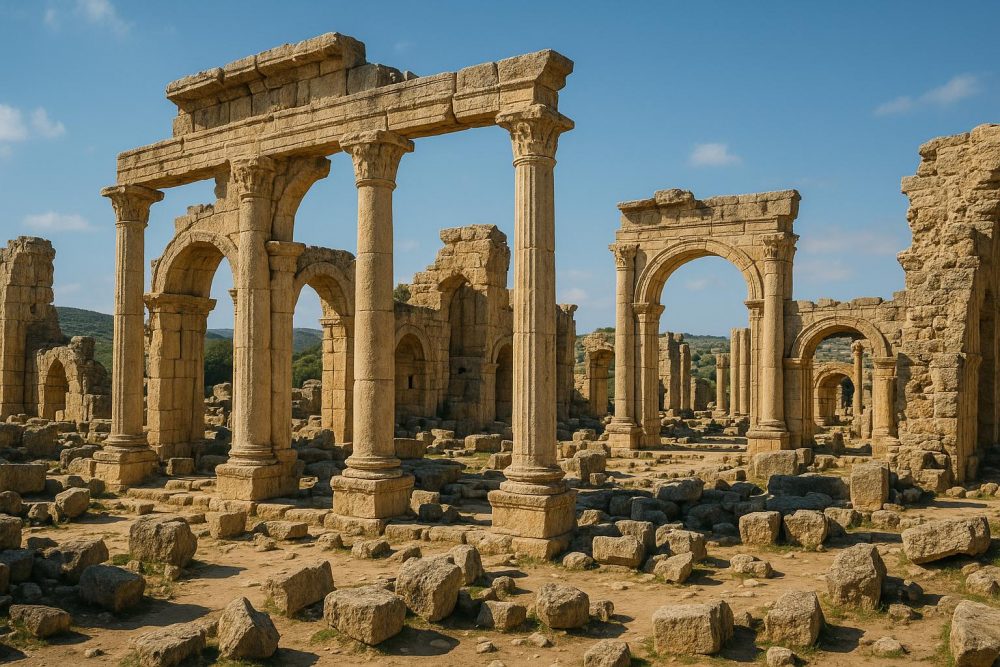
Exploring the Ancient Ruins in Amoud
The ancient ruins in Amoud hold significant historical and archaeological value, offering a glimpse into the past civilizations that once thrived in this region. Located in the Horn of Africa, Amoud has become a focal point for historians and archaeologists interested in unearthing the secrets of early African societies. The remnants of what was once a vibrant city continue to draw the attention of researchers and tourists alike. The journey into understanding the past that these ruins offer is both challenging and rewarding, in equal measure.
The Historical Significance of Amoud
Amoud is believed to have been a prosperous city during the medieval period. It played a crucial role in regional trade and cultural exchanges, connecting different parts of Africa. The city’s ruins are indicators of its past wealth and influence. The artifacts and structures uncovered at Amoud provide insights into not just its historical significance, but also the broader narrative of African development during a dynamic period. As such, it serves as a testament to the early achievements that set foundational elements for subsequent generations.
Architecture and Layout
The architectural remnants prevalent in Amoud reflect a rich tapestry of local and foreign influences. The distinctive structures found here display a blend of indigenous building techniques alongside external elements that point to broader cultural exchanges. Stone was a primary building material, showcasing the advanced skills possessed by the inhabitants. The detailed craftsmanship and enduring quality of these structures suggest the locals had robust architectural knowledge and capability.
Amoud’s layout suggests a well-organized urban plan, indicating a developed civic administration. The carefully considered city design points to a possibility of zoning, dividing areas according to residential, commercial, and religious uses. The alignment and proximity of these zones speak to a society that prioritized efficient space utilization and a harmonious community layout.
Notable Structures
Among the remains, several structures stand out due to their historical importance:
Ancient Mosque: The presence of an ancient mosque within the ruins is particularly noteworthy. It signifies the introduction and establishment of Islam in the region. This religious site not only provided a space for worship and reflection but also acted as a hub for Islamic education and community gatherings. The mosque, with its unique architectural features, offers valuable insights into the region’s spiritual and cultural evolution.
Residential Buildings: The insights gathered from the residential zones add layers to our understanding of daily life and social structures in ancient Amoud. These buildings, constructed with care, housed the people who formed the city’s backbone. The layout of these residences speaks of a society that valued familial privacy while fostering communal living conditions.
Marketplaces: The bustling marketplaces have left their imprint as well, revealing the vibrant economic activities that sustained the city. These areas, often strategically positioned, allowed for the smooth flow of goods and services, ensuring that Amoud remained a significant player in regional trade. These markets would have been the melting pot of cultural exchanges, adding to the richness of the city’s social fabric.
Archaeological Discoveries
Excavations in Amoud have unearthed a variety of artifacts, such as pottery, tools, and religious items. These discoveries help researchers piece together the economic and social dynamics of the ancient city. The pottery, with its intricate designs, points to a sophisticated level of artisanship, providing a glimpse into the dietary practices and domestic routines of its inhabitants. Tools found suggest a range of activities, indicating both the everyday tasks required for survival and more specialized trades.
The religious items discovered hint at the spiritual lives of the people, offering evidence of the ritualistic and ceremonial practices that once took place. Together, these artifacts are crucial for understanding the technological advancements and cultural practices of the time, shaping a narrative of a city well ahead of its time in terms of innovation and cultural richness.
Preservation Efforts
Efforts are being made to preserve the ruins of Amoud and enhance their accessibility for educational and tourism purposes. The fragile state of these ruins requires careful management to prevent further degradation. Conservation projects, therefore, aim to protect the site from both natural wear and tear and human-induced damage, ensuring that it remains a valuable resource for future generations. These efforts not only safeguard history but also enable a greater appreciation for this invaluable cultural heritage.
To bolster these initiatives, local authorities, along with international preservation organizations, are collaborating to develop strategies that ensure sustainability. This involves not just physical conservation but also promoting awareness and understanding of the site’s significance. By doing so, Amoud is being positioned as an educational hub, where both scholars and visitors can gain meaningful insights into the legacy of this ancient city.
Further Research and Exploration
Ongoing research in Amoud continues to shed light on the complexities of ancient African civilizations. Scholars and archaeologists from around the world collaborate to uncover more about this enigmatic city. Through these collaborative efforts, technology and traditional archaeological methods are being leveraged to paint a fuller picture of Amoud’s past.
For anyone interested in learning more about similar sites, additional information can be found at the official Horn of Africa Heritage website. The platform serves as a resource for extending knowledge and sharing breakthroughs related to archaeological finds in the region.
In conclusion, the ancient ruins of Amoud serve as a testament to the rich historical and cultural legacy of the region, highlighting the achievements and challenges faced by past societies. They offer both scholars and casual visitors a rare window into the past, prompting reflection on the multifaceted nature of human progress. The ongoing commitment to understanding and preserving Amoud ensures that its mysteries will continue to unfold for generations to come, offering new perspectives and insights into the sophisticated tapestry of human history.